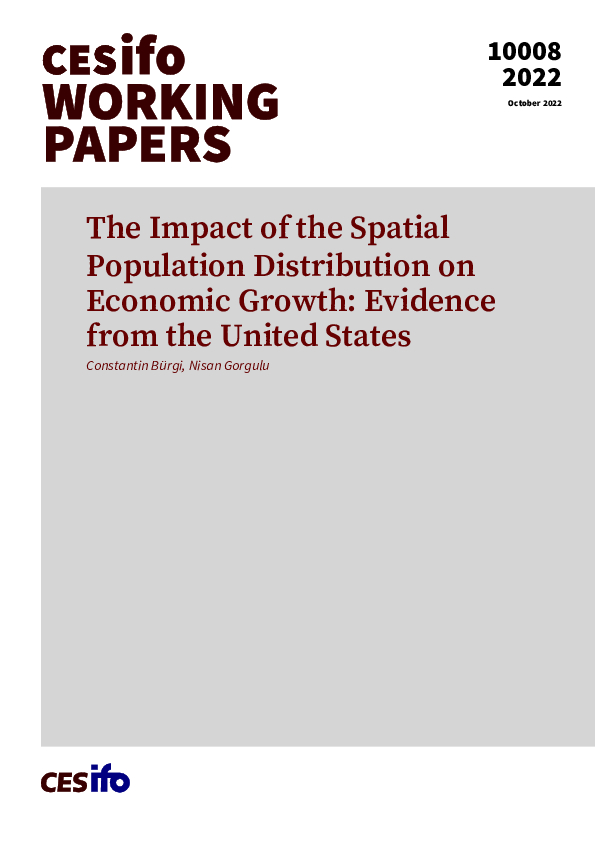The Impact of the Spatial Population Distribution on Economic Growth: Evidence from the United States
CESifo, Munich, 2022
CESifo Working Paper No. 10008

We look at a part of the spatial angle of economic growth. We introduce a new measure Spatial Population Concentration (SPC) that captures the weighted average population surrounding every person within a geographic area. The weights are a function of the distance between the person in question and everyone else. One special case of the SPC would be to measure how many people live on average within a given radius of every person within a geographic area. We then calculate the SPC measure at the US county level for various radii and identify that the measure has the strongest relationship with subsequent economic growth for a 25km radius. Interacting SPC with various infrastructure measures increases the radius to 50km. This suggests that regional policies which affect density as infrastructure projects should target the 25-50km distance range to maximize the growth impact.
Fiscal Policy, Macroeconomics and Growth